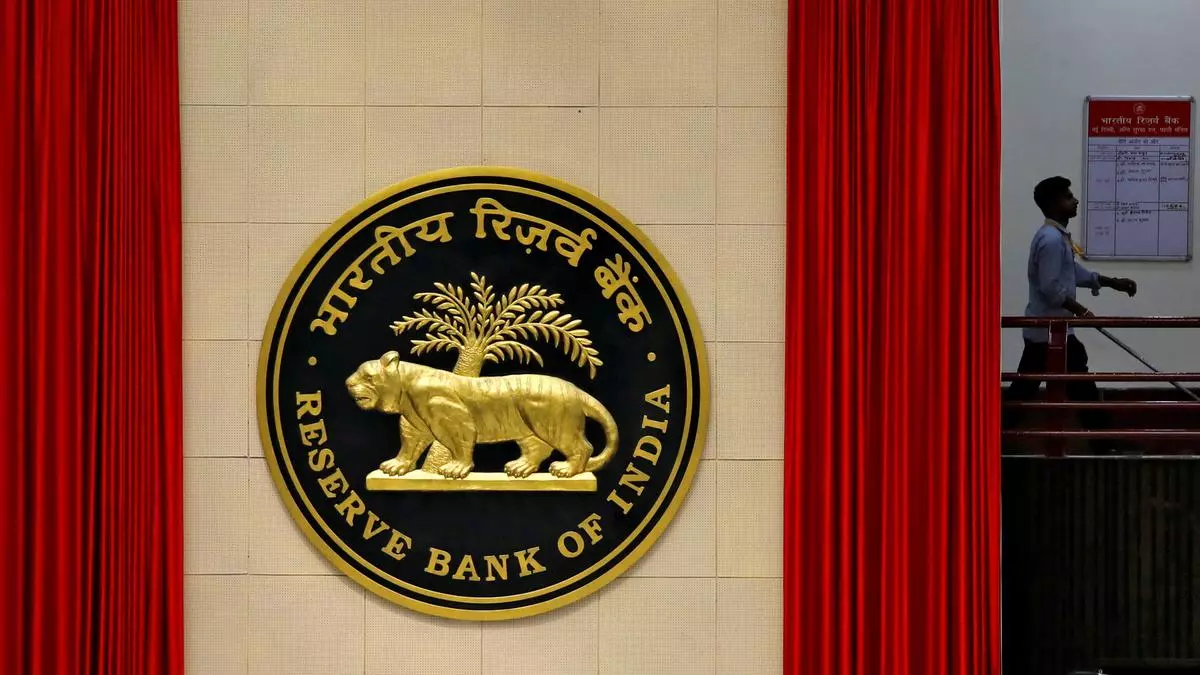Indian banks reports card: Asset quality improves to fresh 10-year high, balance sheet grows by highest in 9 years (The Hindu)

- 28 Dec 2023
Why is it in the News?
Indian banks continued to show improvement in their asset quality, with the gross non-performing asset (GNPA) ratio reaching a new decadal low as of September-end, according to a report by the Reserve Bank of India (RBI).
Key Points from the 'Trend and Progress of Banking in India' Report:
- The Gross Non-Performing Assets (GNPA) ratio of Scheduled Commercial Banks (SCBs) reached a decade-low of 3.9% by the end of March 2023, further declining to 3.2% by the end of September 2023.
- In the fiscal year 2022-23, approximately 45% of the reduction in Gross Non-Performing Assets (GNPAs) of SCBs was attributed to recoveries and upgrades.
- The consolidated balance sheet of banks witnessed a notable growth of 12.2% in 2022-23, marking the highest in 9 years.
- The share of Public Sector Banks (PSBs) in the consolidated balance sheet decreased from 58.6% in March 2022 to 57.6% in March 2023, while private banks saw an increase from 34% to 34.7%.
- As of March 2023, PSBs accounted for 61.4% of total deposits and 57.9% of total advances.
- With inflation persisting above the target, there is a possibility that monetary policy could remain in restrictive territory for an extended period.
- Acknowledging the growing interconnectedness between banks and Non-Banking Financial Companies (NBFCs), the report suggests that NBFCs diversify their funding sources and reduce reliance on bank funding.
- The central bank expresses concerns about banks lending to borrowers with influence, highlighting moral hazard issues that may compromise pricing and credit management.
- The Indian banking system is well-positioned for improvement, boasting better asset quality, high capital adequacy, and robust profitability.
- The financial indicators of NBFCs are anticipated to strengthen further, contributing to the overall resilience of the financial sector.
What are Non-Performing Assets (NPAs)?
- Non-performing assets (NPAs) refer to loans or advances in which the principal or interest payments have been overdue for a period exceeding 90 days.
- In the context of banks, loans are considered assets due to the significant income generated through interest payments.
- When borrowers, whether individuals or corporations, fail to meet their interest obligations, the asset turns 'non-performing' for the bank, as it ceases to contribute to the bank's earnings.
- As per the Reserve Bank of India (RBI) guidelines, banks must publicly disclose their NPAs and report them to the RBI regularly.
The classification of NPAs includes:
-
- Substandard assets: Loans that have been non-performing for up to 12 months.
- Doubtful assets: Assets that have remained in the substandard category for a period of 12 months.
- Loss assets: Assets deemed uncollectible, with little value, making their continuation as bankable assets unwarranted.
- NPA Provisioning involves setting aside a certain percentage of the loan amount as a provision.
- The standard rate of provisioning in Indian banks ranges from 5-20%, depending on the business sector and borrower's repayment capacity.
- In the case of NPAs, Basel-III norms require 100% provisioning.
Key metrics for understanding the NPA situation include Gross NPA (GNPA) and Net NPA (NNPA):
- GNPA: Represents the total value of gross NPAs for a bank in a specific quarter or financial year.
- NNPA: Obtained by subtracting the provisions made by the bank from the gross NPA, providing the precise value of NPAs after specific provisions.
- NPA Ratios express NPAs as a percentage of total advances, offering insights into the recoverability of total advances. For example:
- GNPA ratio: The ratio of total GNPA to total advances.
- NNPA ratio: Utilizes net NPA to determine the ratio to total advances, considering the specific provisions made by the bank.
Government and RBI Initiatives to Address NPAs:
To tackle the issue of Non-Performing Assets (NPAs), the Indian government has implemented a series of comprehensive measures in collaboration with the Reserve Bank of India (RBI).
- Establishment of a Bad Bank: National Asset Reconstruction Ltd (NARC), operates as an asset reconstruction company with the primary objective of purchasing distressed loans from banks, thereby alleviating them of the burden of NPAs.
- Once acquired, NARC endeavors to sell these problematic loans to distressed debt buyers.
- Additionally, the government has established the India Debt Resolution Company Ltd (IDRCL) to facilitate the sale of stressed assets in the market.
- Empowering Banks through the SARFAESI Act, 2002: The Securitization and Reconstruction of Financial Assets and Enforcement of Security Interest (SARFAESI) Act, enacted in 2002, empowers banks and financial institutions to take possession of collateral assets and execute their sale for the recovery of outstanding dues.
- Crucially, this process does not necessitate intervention from the court.
- The SARFAESI Act also provides provisions for enforcing security interests, allowing banks to issue demand notices to defaulting borrowers.
- Holistic Approach with the Insolvency and Bankruptcy Code (IBC), 2016: The Insolvency and Bankruptcy Code (IBC) establishes a comprehensive framework for the resolution of insolvency and bankruptcy in India.
- It is designed to expedite the resolution process for stressed assets, fostering a creditor-friendly environment.
- Under the IBC, both debtors and creditors have the authority to initiate insolvency proceedings against defaulting borrowers.
- The creation of the National Company Law Tribunal (NCLT) and the Insolvency and Bankruptcy Board of India (IBBI) ensures effective oversight of the resolution process.
Significance of NPA Recovery:
- The recovery of NPAs assumes paramount importance in safeguarding the interests of depositors and stakeholders.
- Emphasizing compromise settlements, the focus should be on achieving maximum dues recovery with minimal expenses and within an expedited timeframe.
- In the pursuit of compromise settlements, public sector banks are urged to prioritize the interests of the tax-paying public over the borrowers.
- This aligns with the broader goal of ensuring that resolutions serve the greater public good.
